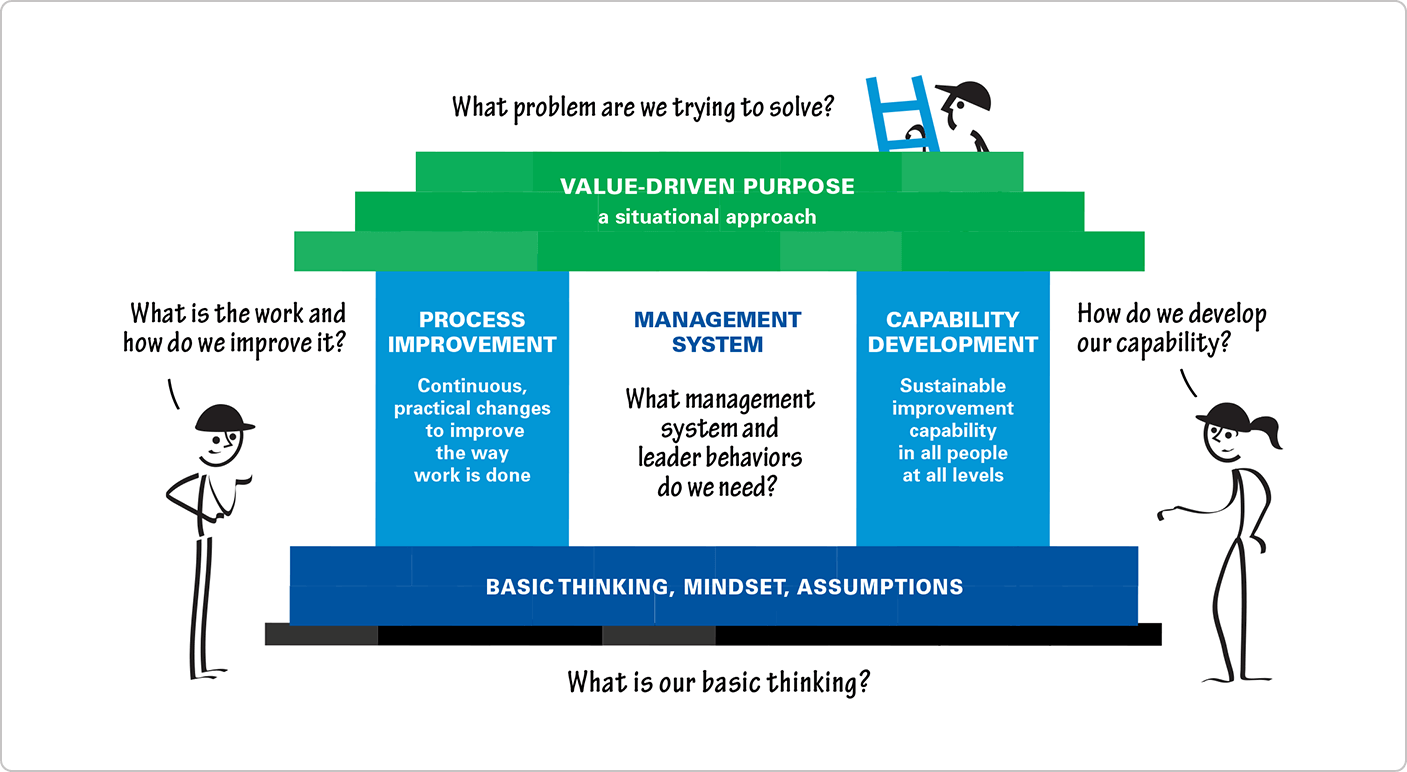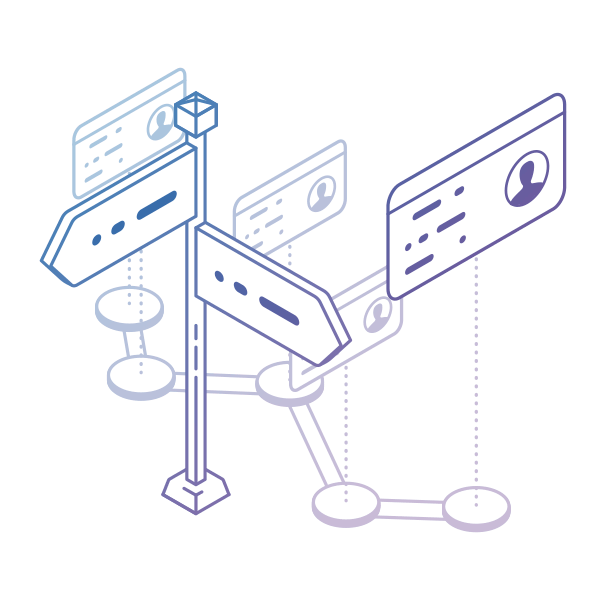Key Takeaways
-
What does a Lean transformation model look like in practice? It's a tailored, practical approach grounded in Lean principles like workflow visualization, continuous improvement, and customer-centric delivery. Each organization's path is unique but built on the same framework.
-
Examples of success: Companies across industries have used this model to reduce delivery delays, increase customer satisfaction, and foster continuous improvement.
-
Lean isn't just a framework – it's a mindset. Done right, it becomes part of your culture, not a temporary initiative.
Lean Transformation in Practice
The Lean Transformation Model, developed by the Lean Enterprise Institute (LEI), is like a five-room house. Each "room" represents a key area of focus you need to get right:
-
Situational Approach: Know the problem you're solving.
-
Process Improvement: Improve how work is done.
-
Capability Development: Build skills in your people.
-
Responsible Leadership: Lead by enabling, not controlling.
-
Basic Thinking/Mindset: Embed Lean into your culture.
The model is deliberately non-prescriptive – it's not about rigid steps but asking the right questions to guide your journey. It's also tool-agnostic, meaning you can pair it with Kanban, PDCA, Portfolio Kanban, A3 thinking, and more.
 Visualization of the Lean Transformation Framework (LTF); Image credit: Lean Enterprise Institute
Visualization of the Lean Transformation Framework (LTF); Image credit: Lean Enterprise Institute
How Is a Lean Transformation Applied in Different Sectors?
One of the most powerful aspects of Lean is its adaptability and practicality – regardless of your industry. From manufacturing to telecom to hardware development, organizations achieve clarity, speed, and strategic alignment using Lean principles and practices.
Here's how our clients have used Lean transformation models to solve real-world challenges.
Case 1: Streamlining Global Purchasing at Encoparts
Challenge: Encoparts, a global supplier of machinery spare parts, struggled with unpredictable deliveries, scattered Excel-based workflows, and poor visibility across their international purchasing processes.
Approach: They started a Lean/Agile transformation using value stream mapping, Kanban practices, and the STATIK method. This helped visualize their complex processes, expose inefficiencies, and design an automated workflow tailored to their needs.
Lean Transformation Goals:
- Increase delivery predictability
- Improve communication across departments
- Digitize and automate work management
Lean Principles Applied:
-
Value stream mapping to uncover waste
- Kanban boards for visualizing work and improving flow
- Flow metrics (cycle time, lead time, throughput) for performance monitoring
- WIP limits and Service Classes to prioritize work
Results:
- 33% increase in process efficiency
-
Real-time visibility into workflows
- Greater confidence in meeting customer delivery expectations
"We achieved a 33% improvement in our process – now understanding the flow and being able to define new strategies assertively and effectively."
– Pedro Iago Ferro, International Purchasing Coordinator, Encoparts Group
»» Read the full Encoparts case study
Case 2: Digitizing Agile Operations at Algar Telecom
Challenge: Algar Telecom needed to integrate its traditionally managed Integration department into a digitally driven business unit. Their old methods – long email threads, chaotic Excel tracking, and no workflow transparency – were slowing them down.
Approach: They introduced Lean/Agile practices, including digital Kanban boards, Agile ceremonies (Planning, Reviews, Retrospectives), and shared customer dashboards.
Lean Transformation Goals:
- Align traditional teams with agile business units
- Improve customer delivery visibility
- Standardize and digitize workflows
Lean Principles Applied:
- Flow visualization and blocker management
- Cross-functional collaboration through Agile ceremonies
- Customer transparency via shared boards and dashboards
- Continuous improvement through retrospectives and feedback loops
Results:
- Reduced emergency escalations
- Greater operational agility
- Faster customer feedback integration
"There is a new management era at Algar Telecom. The Integration department is already accelerating the spread of digital ways of working across their operations to initiate faster responses and ultimately higher satisfaction."
»» Read the full Algar Telecom case study
Case 3: Connecting Strategy and Execution at Bft S.p.A
Challenge: Bft S.p.A., a hardware product manufacturer, faced disconnects between its strategic R&D portfolio and day-to-day engineering execution. Using Gantt charts and Excel wasn't cutting it – they lacked transparency, ownership, and delivery confidence.
Approach: They digitized their project management system using interconnected Kanban boards that linked high-level initiatives with team-level tasks.
Lean Transformation Goals:
- Connect strategic priorities with team execution
- Improve visibility across R&D projects
- Reduce organizational stress through better work ownership
Lean Principles Applied:
- Management Boards for visualizing portfolio progress
- Linked Workflows to connect strategy and execution
- Blocker Escalation Systems to improve responsiveness
- Service-Level Expectations (SLEs) to forecast delivery
Results:
- Improved project predictability
-
Empowered engineers with task ownership
- Full transparency from portfolio to execution
"With Businessmap, we have the full project portfolio. It's a complete environment where everyone knows what to do, why they have to do it, and where it comes from."
– Renzo Renzi, Project & Development Director, Bft S.p.A
»» Read the full BFT case study
Why Lean Transformation Is a Journey, Not a Checkbox
Lean transformation isn't just a checklist of tools. It's about how your teams think, work, and improve together. The model thrives when leaders support autonomy, teams own their flow, and the whole organization aligns around customer value.
Businessmap is the most flexible software
to align work with company goals





 Visualization of the Lean Transformation Framework (LTF); Image credit: Lean Enterprise Institute
Visualization of the Lean Transformation Framework (LTF); Image credit: Lean Enterprise Institute

